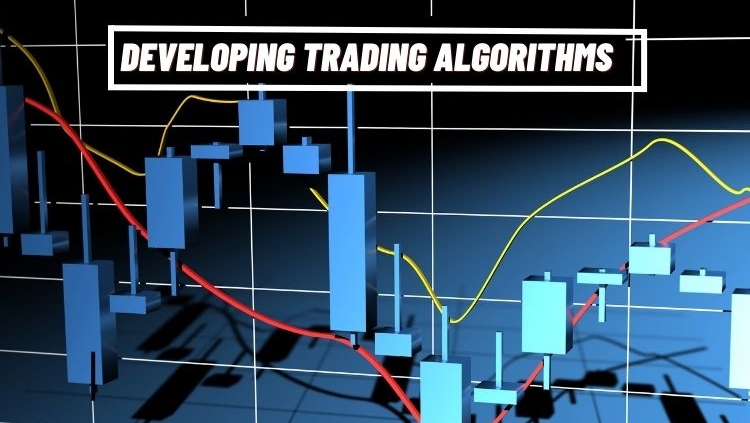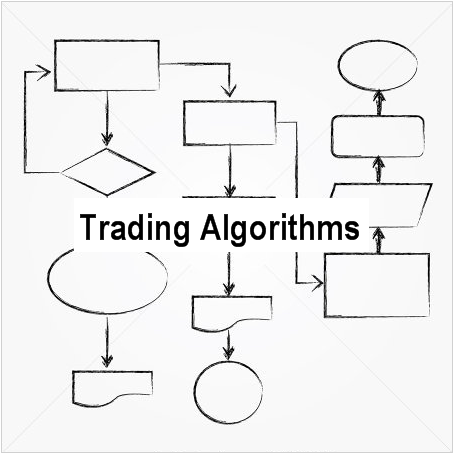Developing Trading Algorithms: How To Create a Trading Algorithm??
Trading algorithms are a specific type of computer program that allow the execution of automated trades by market participants. The algorithm examines previous data to predict how the price of a security or item will change, and it then executes a transaction on its results.
Although there is a wide variety of trading algorithms, they are always characterized by a few core features in common. For instance, all algorithms require data from the past to produce accurate recommendations regarding future prices.
In addition, all algorithms resort to mathematical analysis to arrive at their results. The rule that controls the algorithm’s decision-making process is the component of any trading algorithm considered the most essential. Investors have looked for algorithmic asset revesting advisors but they really don’t exist yet.
This rule instructs the algorithm on how to proceed whenever it is presented with a new condition, such as purchasing or selling securities.
In this article, we’ll go over some python Programming trading algorithms and explain how they might be used in your trading today. Choosing the right trading algorithm is important since there are many options available.
Understanding the basics of algorithmic trading
Algorithmic trading, often known as electronic trading, uses computer programs to place trades in financial markets. Algorithmic traders use these algorithms to fine-tune their investing strategies and predict future price changes.
To complete a certain task, computers follow algorithms, which are instructions. These rules are used to make trades in the financial markets via an algorithm.
As a rule, an algorithm will have three components: a strategy, a rule engine, and an order execution engine. The investor will outline their trading objectives and preferences (s) in the strategy section.
The rule engine will use the predetermined objectives to decide when and how to execute transactions. The orders will be sent to the market and executed by the order execution engine.
The following are some of the most noticeable distinctions between algorithmic trading and more conventional methods of trading:
- Algorithmic traders can make transactions all day long, whereas human traders have daily quotas that they must stick to.
- Algorithmic traders can take up more complex positions since they can access various tactics.
- The efficiency of algorithmic trading typically exceeds that of traditional trading, resulting in higher profits with less exposure to risk.
some benefits of using algorithmic trading
Several benefits come with using algorithmic trading software. These benefits include faster execution times, lower risk, higher profitability due to automated hedging, diversification opportunities across different securities, etc.
Compared to human traders, algorithmic traders have an advantage due to their ability to foresee price fluctuations.
Trading algorithms provide many benefits, including increased efficiency and precision. Opportunities that human traders might miss can often be exploited successfully by algorithm traders.
Human mistakes and sensitivity to market fluctuations are two potential drawbacks.
Related: What type of trader or investor are you?
How To Create a Trading Algorithm??
Trading algorithms are a critical part of any successful day trading strategy. They help detect trends in market data, allowing for more calculated investment decisions.
The backtesting algorithm is the most prevalent trading algorithm. However, there are many more. This algorithm examines trading performance over time to determine if it has consistently generated profits. Manual or automated software is available for backtesting purposes.
Algorithms that attempt to track the current market trend are called “trend-following.” While this strategy has the potential to yield more profits than trading in response to the trends of individual securities, it also carries a higher degree of risk due to the volatility of market sentiment.
A trading algorithm should seek to maximize earnings while reducing losses to achieve long-term success. There is more than one technique to accomplish this, and you should select the one that usually works for you.
Related: Technical Trading Strategy
Choosing the right programming language
There are many programming languages available to develop trading algorithms. The features needed, the user’s level of comfort with the language, and the resources at hand all determine which language best suits a given project.
Languages in Algoritmic trading python, C++, and Java are often used for algorithm creation. Only some languages can handle all types of algorithms.
Therefore, it’s crucial to pick the right one. In addition, several development environments can facilitate more efficient and comfortable work with a certain programming language.
The following are some things to think about when choosing a programming language:
-
Essential features:
When choosing a language to write code in, you must consider the specific capabilities you’ll need to complete your goal.
For instance, some languages provide pre-installed libraries that supply frequently-used features like data management and graphical user interface creation. The options can be narrowed down if you have a good idea of your desired characteristics.
-
User familiarity:
It’s important to learn the language you’re coding in if you want to be productive and successful.
This demands investing in your education by reading tutorials and consulting online resources to understand the language’s syntax and semantics.
-
Possible Resources:
There is also the developer’s tool to think about, which is used to create software. It’s extremely unusual for certain jobs to call for specialized tools.
While the text-based interface of R makes it a popular choice for statistical research, it can sometimes be better-suited for graphical depiction. In this situation, it could be helpful to employ a different method.
Pros and cons of each language
Learning a new programming language comes with a wide range of pros and cons. It’s not easy to determine which one is best for you.
Some of the most important factors are as follows:
Pros:
- Python’s popularity in the academic world makes it a great choice for the long-term stability of your project.
- It’s readable and has syntactic luxury, so it’s easy to pick up for seasoned programmers.
- With its rich standard library, it’s simple to make use of code written in other languages.
Cons:
- However, Python’s lack of features like trash collection and type inference that are common in other languages might increase development time and complexity.
- Passing an argument around can be perplexing at first.
There are several factors to consider while choosing a programming language for best trading algorithms. The language’s popularity and availability are essential since many traders use it to construct their trading systems.
The language’s structure and learnability are also important. Programmers should also examine the language’s ability to concisely explain complicated algorithm concepts and its support for various software development platforms.
Related: Investors Have Stockholm Syndrome
Data preparation and pre-processing
The foundation of any effective trading algorithm is the time spent preparing and pre-processing the data it will need. Traders can only possibly improve their methods with access to reliable data.
Trading opportunities can be located with the help of technologies like market data sources and sentiment analysis. As soon as the information is ready, it can be transferred to a trading platform and conducted automatically.
Gathering and cleaning historical market data
This blog post discusses how traders can gather and analyze historical market data. Many software programs simplify this procedure. Traders can also use free resources.
After cleaning historical data, traders must construct trading algorithms. Algorithms let traders immediately calculate the value of a security or commodity. Use this information to invest.
Each algorithm has a unique approach. All algorithms estimate future values to help traders make money.
Engineering of features and normalization of data
- Feature engineering creates and refines a trading algorithm’s features. Order types, price ranges, volume ranges, and periods can be complex.
- Normalization ensures trading algorithm data is correct and consistent. Heterogeneous data sets may have errors or inconsistencies that must be fixed before the algorithm may execute.
Techniques for handling missing data and outliers
Researchers might employ various methods when dealing with missing information or unusual data. The mean or average of the data collection is often used to fill in missing numbers.
There are mathematical algorithms and regression models that can accomplish this. If it doesn’t work, replace missing values with the most common value in the dataset. You can use either a numerical algorithm or a random sampling technique.
Building the trading algorithm
The term trading algorithm refers to a system of making investment decisions,such as when and how to buy and sell stocks.
Choosing appropriate variables is the most crucial component of designing a good trading algorithm. Your investment, objectives, and horizon will determine which options are optimal for you.
There are some factors to think about when establishing a trading algorithm:
-What do you hope to achieve from your investments in the long run, above-average returns, or somewhere in between?
-How much money are you willing to risk losing?
-How long do you plan on keeping your investments?
-The state of the market: what are the most recent tendencies?
Your decision-making rules should be formulated once you have selected your parameters. Buy/Sell Rules, Order Types, Trailing Stop Levels, and Position Size are all examples of rules that can be implemented in a trading algorithm.
Different algorithmic trading strategies
There are various algorithmic trading strategies. Momentum, trend following, and mean reversion are popular. Each has pros and cons. Each strategy’s basics and how to apply them to your financial asset will be covered here.
Mean Reversion
Mean reversion is a popular algorithmic trading approach that predicts future prices using previous data.
The objective is to acquire assets while they’re cheap and sell them when they’re expensive. If the market goes against you, this method can help you prevent losses.
Momentum trading
Momentum trading predicts future prices using recent data. To generate quick profits, this technique buys assets when prices rise and sell them when they fall.
Trend Following
Trend following uses historical data to anticipate future pricing. Rather than making immediate profits, the goal is to hold onto assets until they reach a desirable price range.
Algorithms for finding patterns in financial data that may suggest future changes are called signal-processing algorithms, as opposed to trend-following algorithms, which are meant to follow trends.
Both of these classes have a membership that follows trends, and many algorithms used in signal processing fall into the latter category.
Deployment and execution
Algorithms help traders select equities to purchase and sell. These computers find stock price trends in historical data and recommend trades. MATLAB, Python, and C++ are used to design trading algorithms.
You must upload your algorithm to an online trading platform. This requires creating a user account and configuring the programme for the platform. Finally, observe and adjust your algorithm’s performance.
Monitoring and adjusting the algorithm in real-time
Real-time optimization of trading algorithms necessitates ongoing monitoring and perfection.
Taking on this challenge can be approached in several ways.
- One strategy involves keeping close tabs on the algorithm’s efficiency and adjusting it as needed. One common method is to monitor financial performance over time and make adjustments in response to fluctuations.
This method, however, requires constant attention because it relies on tracking the algorithm’s output.
- The use of automated regression testing tools is an alternative method. These technologies automatically analyse historical data to determine what caused any changes in the findings.
The analysis will help the tool propose changes to the algorithm that might boost its efficiency.
- Both methods are imperfect. Though time-consuming, continuous monitoring enables prompt action when adjustments are required to maximise the algorithm’s effectiveness.
Automated regression testing can be more precise, but it needs a lot of historical data to be useful.
Managing risk and managing
Risk management is crucial if you want to make money trading, as trading itself may be a high-stakes enterprise. Some suggestions for minimising risk:
- Consider the potential disadvantages of each investment.
- To reduce your loss exposure, set profit targets and stop-loss levels.
- Rely on technical analysis to foresee the market’s actions in the future.
- Monitor your portfolio’s progress over time to see if your investments are yielding the desired results.
Conclusion
In this article, we’ll discuss the findings of my work on a trading algorithm. When we first began, we looked at data from the past to see if there were any trends. We used the information to create a model to foresee future price changes.
The future outlook for algorithmic trading is very bright. Algorithmic stocks and financial asset trading has grown with technology. This makes trading simpler and more profitable. New platforms and technologies simplify algorithm implementation for traders.
This investment method is available to more traders. Regulatory agencies are improving their oversight of these trades, making traders and platforms safer. Algorithmic trading will majorly impact the stock market in the next few years.
Check other services by Chris Vermeulen thetechnicaltrader.com, thegoldandoilguy.com & revesting.com




